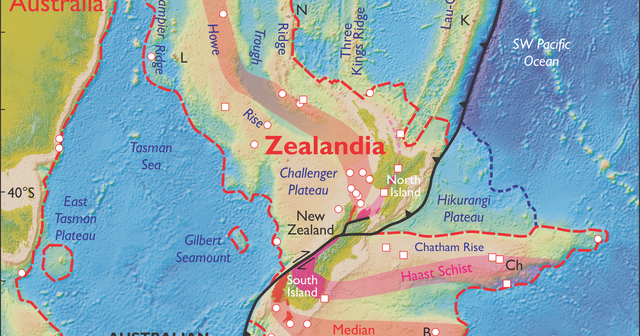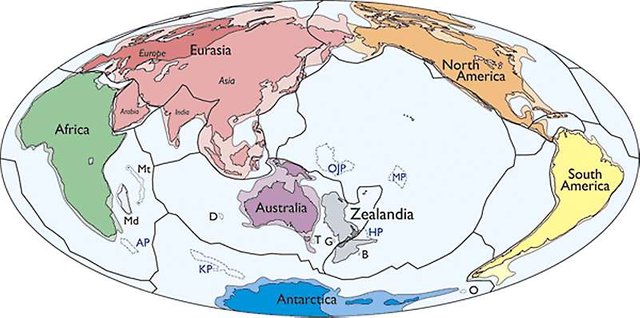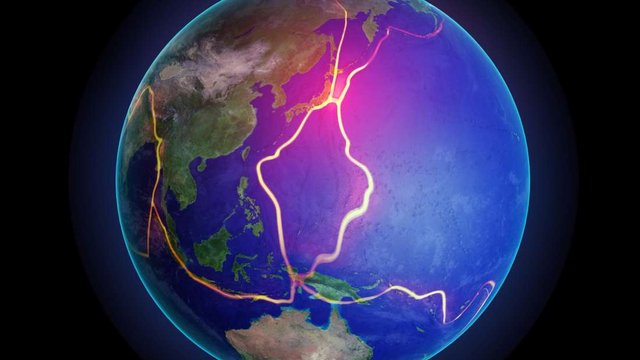New Continent Discovered In South West Pacific, Hiding in Plain Sight: Zealandia

The official narrative on the continents of planet Earth is that there are seven, including Africa, Asia, Antarctica, Australia, Europe, North America, and South America.
In other fields of study it is seen differently. According to the field of geology, Europe and Asia are considered one huge supercontinent, based on the features of the Earth rather than human population, which makes for a total of 6 continents. Europe and Asia are physically conjoined, which technically makes them one continent.
However, a new and intricate study of the Earth’s crust indicates that in fact a seventh geologic continent is hiding in plain sight. They call it Zealandia, and for several millennia it has been hiding right under our noses.

The study, led by a team of eleven researchers report that it turns out, the islands of New Zealand and New Caledonia aren’t simply a chain of islands in close proximity to each other. The fact is, they all belong to one plate, a 4.9 million-square-kilometer (1.89 million-square-mile) gigantic chunk of continental crust that is distinctly separate from the continental crust of Australia.
“This is not a sudden discovery, but a gradual realization; as recently as 10 years ago we would not have had the accumulated data or confidence in interpretation to write this paper,” said the researchers in a journal operated by the Geological Society of America, GSA Today.
Ten of the eleven researchers involved with the work are employed by institutions that are within the borders of the new continent, and the eleventh one is employed in Australia by a university.
However, despite the potential bias of these researchers it is believed that other geologists nationally will readily accept the conclusions brought by the study, at least according to a geophysicist from the University of California at Santa Barbara, Bruce Luyendyk, a man not involved with the study itself.
“These people here are A-list earth scientists,” Luyendyk said. “I think they’ve put together a solid collection of evidence that’s really thorough. I don’t see that there’s going to be a lot of pushback, except maybe around the edges.”
Luyendyk himself actually coined that term “Zealandia” in 1995, but not quite anticipating the existence of this continent to become known. However, he says he never actually believed that it was a new continent physically connected, it was a term that was used to describe New Zealand, New Caledonia, and various submerged islands, slices and chunks of continental crust believed to have broken off a region of a 200 million year old supercontinent they refer to as Gondwana.
“The reason I came up with this term is out of convenience,” Luyendyk said. “They’re pieces of the same thing when you look at Gondwana. So I thought, ‘Why do you keep naming this collection of pieces as different things?'”
Different criteria are used in the scientific community to determine if a land mass is in fact conjoined beneath the ocean. To call something a continent, it must be:
1. Land that goes up a certain altitude off the floor of the ocean
2. At least three types of rock are present on the landmass including metamorphic rock altered by pressure or head, igneous rock formed by volcanic activity, and sedimentary rock formed through the processes of erosion
3. A less dense, but thicker section of the crust in comparison to the nearby ocean floor
4. Common sense, well defined borders surrounding a large enough area to be genuinely considered a continent rather than a piece of a continent, or microcontinent.

So the eleven researchers say that the new continent fits the criteria for the first, second, and third items on that list.
However, the real evidence for the continent lies in the study’s recent, detailed satellite data that evaluated the elevation and gravity of this ancient seafloor. It reportedly proves that Zealandia is conjoined beneath the ocean, one unified plate.
They report that Zealandia is approximately the area of greater India in size, larger than Greenland, Madagascar, or the other almost-continent land masses of our planet.
“If the elevation of Earth’s solid surface had first been mapped in the same way as those of Mars and Venus (which lack […] opaque liquid oceans),” they continued, “we contend that Zealandia would, much earlier, have been investigated and identified as one of Earth’s continents.”

(Image credit: iflscience, publicopiniononline)